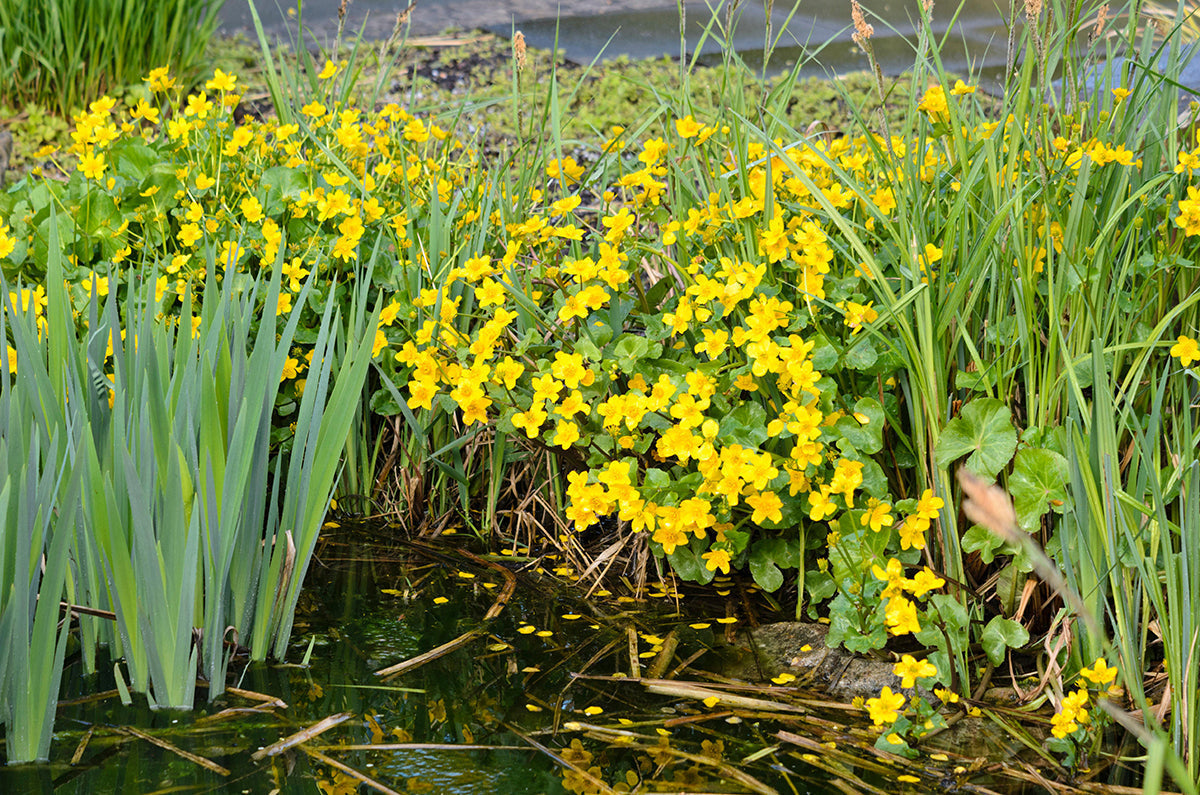Plant folklore - marsh marigold

Marsh marigold, Caltha palustris, is also known by a variety of names such as kingcup, yellow marsh marigold, and cowslip. The name ‘kingcup’ is believed to have originated from the Old English term ‘cyneceoppa’, which means ‘royal head’, a name thought to be reflected in the plant's majestic appearance, with striking yellow flowers that stand tall and proud in marshy environments.
The marsh marigold has played a part in folklore and mythology throughout history. In Norse mythology, it was linked to Freya, the goddess of love and fertility. The plant also carries significance in Christian tradition, where it was known as ‘Mary's Gold’ and was thought to have bloomed during the Annunciation, the biblical event where the angel Gabriel announces to the Virgin Mary that she will conceive and bear a son.
The plant’s history can be traced back to the end of the last Ice Age, when it quickly spread across newly exposed, fertile ground as the ice retreated. This helped establish its presence across the northern hemisphere, including Northern Asia and parts of North America.
In Britain, the marsh marigold has accumulated numerous folk names such as May blob, horse blob, crazy Beth, and water gowan. The plant also plays a role in traditional May Day celebrations. It was one of the flowers commonly collected and placed in windows and over doorways, along with other blooms like rowan, gorse, and hawthorn. On the Isle of Man, the flower was called ‘Lus y Voaldyn’, or the herb of Beltane, and was thought to protect against witches. In County Antrim, children would place kingcup blossoms through the letterboxes of houses as a gesture to ward off evil spirits.
The marsh marigold has often been associated with the mystical and magical. In England, the plant was used to protect against the mischief of fairies. Garlands made of the flowers were worn by cattle as protection against the ‘evil eye’, a belief that the plant had supernatural power. Some even referred to its ability to ward off evil spirits and bring about good fortune.
As early bloomers, they are often one of the first of the wildflowers to appear in spring. This makes it a vital food source for early-emerging pollinators such as bees and butterflies. The plant thrives in wet conditions, capable of growing in standing water, which makes it valuable for wetland restoration projects while its roots also help to purify water by absorbing excess nutrients and pollutants, enhancing water quality in aquatic ecosystems.
For centuries, the marsh marigold was used in traditional medicine for its healing properties where it was employed to treat conditions such as digestive disorders, respiratory ailments, and rheumatism. It was also applied externally for skin conditions and wounds. Modern research has found that marsh marigold contains bioactive compounds, including saponins, alkaloids, and flavonoids, which may possess anti-inflammatory, antioxidant, and anti-tumour properties. Some caution is required when handling this plant, as it contains ranunculin, a toxic compound found in the buttercup family which can cause skin irritation and can be harmful if consumed.







